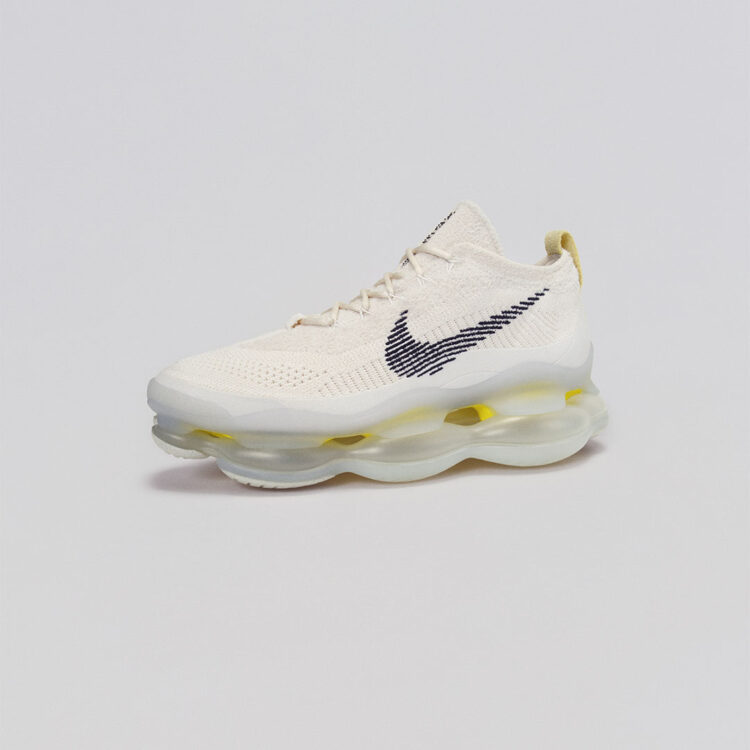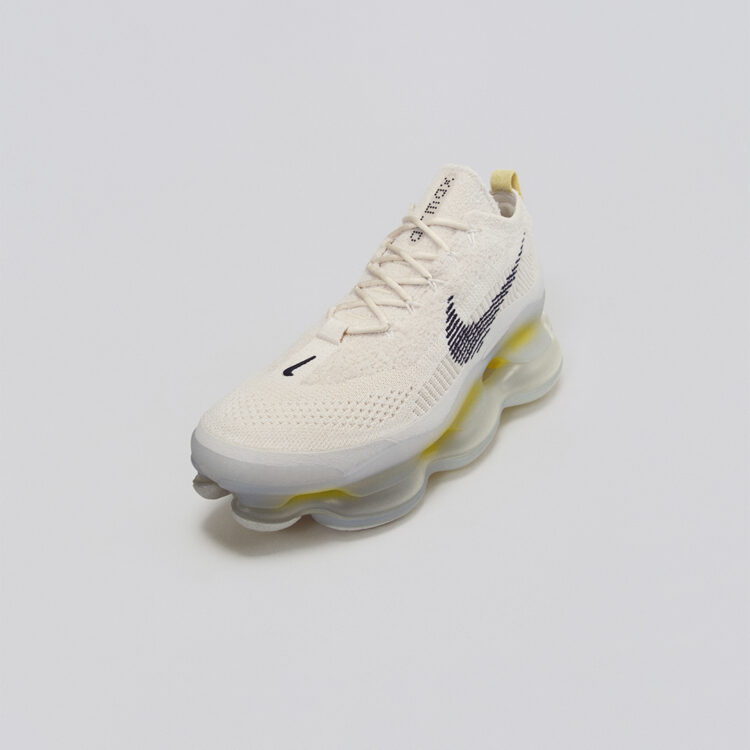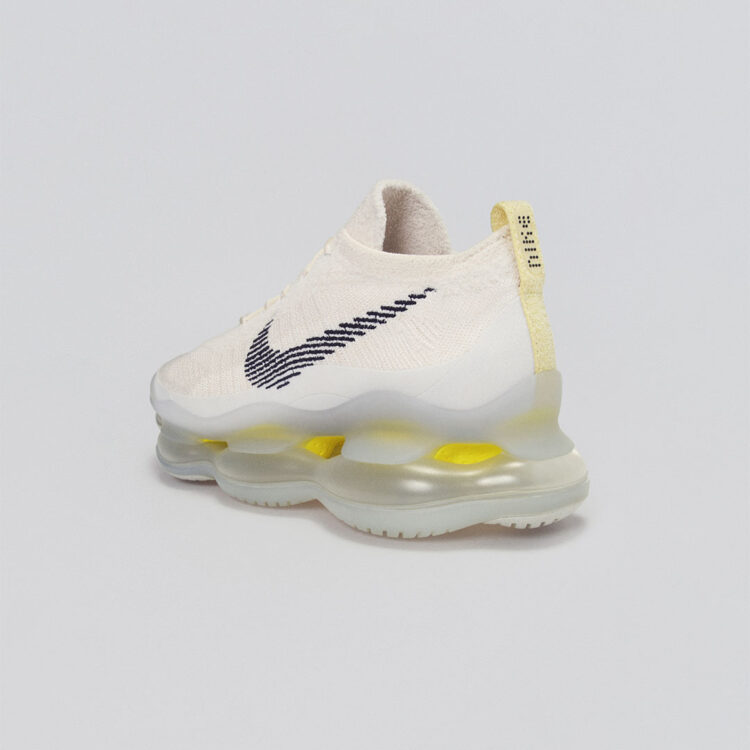This post may contain affiliate links. Please read our disclosure policy.
How the pandemic opened up Nike’s Pandora’s box of creativity & innovation
Innovation has been at the core of Nike and its Air Max line since the beginning. Once Air was introduced in 1979 with the Air Tailwind, the sky became the limit for Air. And when Tinker Hatfield introduced the Air Max 1 in 1987 with its exposed Air unit, it marked a new era for design and for sneakers.
Nearly forty years later and the Swoosh is continuing that spirit of groundbreaking design with its latest Air Max model — the Air Max Scorpion.

“From day one, the designers’ ideas/concepts/sketches and even cobbled samples were all about a big Air experience,” said Kathy Gomez, VP of Footwear Innovation at Nike. “Right away, the team assembled and knew from the idea that it was going to push the limits of Air sole technology and geometries and that we had to build something in a new way.”
As the blueprint for the latest chapter in Nike Air was born, the world went into lockdown as the pandemic spread. Rather than delaying the process of the Scorpion, Nike’s digital technologies helped and even accelerated the Air Max Scorpion.
“After the idea was born, we went into lockdown,” Gomez said. “We used our digital tools to learn how to make [this shoe] and test it, but also to communicate. We were lucky to have these tools. The team really engaged each other.”
Created in just 18 months, the Air Max Scorpion implemented 3D VR design software, computational design, engineering tools and decades of vertical Air Manufacturing Innovation (Air MI) knowledge to bring the revolutionary design to market.

The result of all this innovation leads to the most Air offered in terms of pounds per square inch, pressure graded across all sizes. In addition to the Air unit, the latest Air system is balanced by a Flyknit chenille upper in which short fibers are held perpendicularly in place by two twisted vertical core yarns to form a soft pile texture, leading to a sensation of comfort in every step.
“[The Scorpion] opened up the acceptance of new things on how we do things,” said Andy Cain, VP of Footwear Product Design.
“Traditionally, we kind of do everything by hand in a 2D plane. When we went to 3D, there were a couple of things that were a challenge. We were going through the pandemic years so there were two things that catalyzed the opportunity: we started using digital whiteboarding to get ideation going and capture the creative spark and happy accidents when creating. The second was shifting from Illustrator 2D and hand sketching to VR-based software which you can design in full 3D.”

The monumental shift was advantageous for the team as it led to a more thorough design in a fraction of the time.
“The advantages to that were powerful because you can visualize things quickly. It’s intuitive. It enabled us to get a better design intent of what we were after. It’s one of the most pivotal shifts in design that I’ve seen,” Cain added. “Pandora’s box of creativity just opened up. It’s amazing.”
As Nike celebrates its 50th anniversary, the Nike Air Max Scorpion arrives at an important time in not only the brand’s legacy but within the sneaker industry as well.
“Air Max is one of the pioneering innovations of our industry,” Cain said. “It’s fitting that we take Air into the next chapter. Unlocking the technology, that’s the shift into the future and opens up the next 50 years of how we do things.”
The Nike Air Max Scorpion releases on October 5 at Nike.com and select retailers.
Keep it locked on Nice Kicks for more exclusive interviews and the Sneaker Release Dates page to stay on top of the latest drops.




